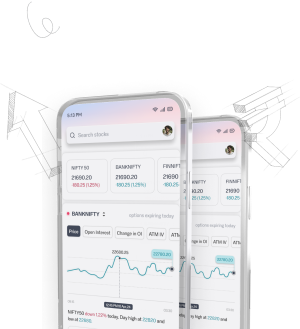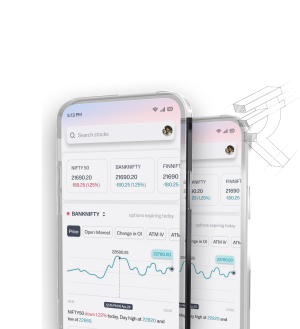Short Put Options Strategy Guide: Definition & All You Need to Know
We're diving into options trading, and one method shines for the bullish trader: the short put. This strong strategy boosts our portfolios and builds our stock market confidence. By knowing options basics, we get why short puts matter a lot to us.
Short puts let us earn money by collecting premiums. We might also buy stocks cheaper if things go our way. But, there's a catch. We must buy the underlying asset at the strike price if required. We will check out how the short put works and see why it can make good money.
Understanding Options Trading Concepts
Options trading offers many strategies for traders to use their positions well. At the heart, it's all about knowing what options are. And learning about their types is key.
What Are Options?
Options are deals that let traders choose to buy or sell something at a set price before a certain date. This choice makes options trading very flexible. It helps traders make money in markets going up or down. This is done by selecting call options or put options.
Types of Options: Call vs. Put
Knowing the difference between call options and put options is vital. Call options mean you can buy an asset, hoping its price goes up. Put options mean you can sell, useful if you think the price will fall. Each option fits different trading styles and ways to manage risk.
The Mechanics of Options Pricing
Options pricing is complicated but very important. It's shaped by different things, such as:
- Intrinsic Value: This is the option's real value today. It's found by comparing the current price of the asset and the agreed buying price.
- Time Value: This looks at how the price might change until the option ends. It drops as the end date gets closer.
- Market Conditions: How stable or unstable the market is can really affect option prices. More ups and downs usually mean options cost more.
Understanding these parts helps us see how our trading plans might work out. We will dive into specific strategies like the short put later in the article.
What Is the Short Put Option Strategy?
The short put option strategy is great for traders who think stock prices will stay steady or go up. By selling put options, we get money right away and place ourselves smartly in the market. It's a way to earn from the stock market carefully.
Definition of Short Put Options
When we sell a short put option, we're selling a contract. This contract lets the buyer sell a stock at a set price before the contract ends. If the stock's price stays above this set price, we keep the money we made from selling the put. This method is seen as bullish but works in steady markets too.
Why Traders Use Short Puts
Traders use short put options for a few good reasons:
- Income Generation: The money we get upfront gives us immediate cash flow.
- Stock Acquisition at a Discount: If the stock price falls below the set price, we might end up buying the stock at a good price.
- Market Confidence: This strategy fits well in markets that are steady or slightly going up.
The main gain seems to be the upfront money. Yet, there are risks like the stock's price rising or market changes. Being aware and experienced helps us manage these option selling strategies well.
Options Strategies Short Put Explained
Understanding short put options is key in advanced options trading. Selling a short put means you'll buy the asset at a set price. This method is often used by optimistic investors.
How Short Put Works
Imagine selling a put option at INR 525 per share, and you get INR 5 per share upfront. This gives us some option premium income right away. If the price stays above INR 525, we keep the premium. But, if it drops below, we might have to buy at a higher price, risking a loss.
Profit and Loss Potential
When we talk about profit and loss, know the profit tops at the premium. Yet, if the stock falls to zero, the loss could be huge. It's vital to watch the market closely.
When to Use This Strategy
Use the short put when you're sure the market will stay strong. Constantly watching the market and having an exit strategy is crucial. This tactic works best for those who keep a bullish stance.
| Characteristic | Market View | Maximum Profit | Maximum Loss | Entry Conditions | Risk Management |
|---|---|---|---|---|---|
| Short Put Option | Bullish | Option premium received | Unlimited, if underlying goes to zero | Confident in asset strength above support level | Need for exit strategy and market monitoring |
Risk Management in Short Put Options
In short put options, managing risk is key. It's vital to know the risks, like big losses if the stock falls below the price set. Let's look at identifying risks and taking steps to protect ourselves.
Identifying Potential Risks
Identifying risks in short put trading is critical. Market changes can suddenly drop the price of the asset. We must also watch timing risk, as market changes can hurt us. A lack of buyers might force us to sell at a loss. Knowing these risks helps us make better plans.
Setting Up Stop-Loss Orders
Stop-loss orders help manage risk by setting a max loss limit. This approach can protect our money while using the short put strategy. These actions create a safety net in unstable markets, giving us more confidence to trade.
Using Short Puts Within a Balanced Portfolio
Short puts can make our portfolio better by earning money from sold options. This strategy helps us buy stocks cheaper and protects against losses. Keeping our investments varied is key to not putting too much into one area. Short puts, used wisely, help us manage risk and reward.
Comparing Option Selling Strategies
We often look at short puts, covered calls, and naked put options in option selling. Each strategy has its own benefits and risks. It's key for us to see how they stack up in making money and risk taking.
Short Puts vs. Covered Calls
Short puts and covered calls are good for making cash. With covered calls, we keep the asset and sell call options on it. This action gives us cash while we still have the asset.
Short puts let us sell the right to sell us the asset at a set price, giving us cash too. The risks differ a lot between these methods. Covered calls' losses are limited to how much the asset loses value. But, with short puts, if the asset's value goes down a lot, the risk goes up.
Short Puts vs. Naked Put Options
Looking at naked put options and short puts, they have things in common. Both methods involve selling options without owning the asset. Naked put options seem riskier since losses can be big if the market goes against us.
The biggest loss with naked put options can be huge, while with short puts, it's usually just the cash paid for the option. For those wanting to cut risk, it's smart to look closely at market conditions and how much risk you can take.
In the end, traders must pick a strategy that fits their goals and view of the market. Choosing between covered calls, short puts, or naked put options means knowing the risks and rewards. This understanding helps us make smart choices in our trading.
Leveraging Technology in Options Trading
In the fast-changing options trading world, technology is a big help. The Sahi Trading app changes the game, letting us trade easily on mobile. It gives us access to tools that make complex strategies easier and help us decide wisely.
The Sahi Trading app helps us understand different trading strategies. Whether we are optimistic, pessimistic, or neutral, it has us covered. It teaches us about strategies like the bull put spread or the long straddle. We're always ready for market changes with this knowledge.
Technology also lets us analyze market data better. We learn about pricing and risks in a simpler way. With live updates and tools, trading feels less scary. Embracing this tech means smarter, more profitable trading for us. We catch every chance we get.
FAQ
Q. What are options in trading?
Options are special contracts giving the right to buy or sell something at a set price. They must be used before a certain date. There are call options for buying, and put options for selling.
Q. What is a short put option strategy?
In a short put option strategy, we sell put options hoping the stock stays above a price. We get money upfront, which is our income.
Q. Why would we use the short put strategy?
Short puts are chosen to make money through option premiums and to get stock cheaper. They show we think the market will not fall.
Q. How does a short put work in practice?
Selling a put option means we get money right away. This plan works if the stock's price doesn't drop too much. But, big drops can cause big losses.
Q. What are the risks associated with short put options?
The biggest risk is losing a lot if the stock falls a lot. It's important to really understand the market and set up safety measures.
Q. How can we use short puts in a balanced portfolio?
Short puts add variety to earning strategies and help control risk. Knowing our risk limit and the market is key.
Q. How do short puts compare to covered calls?
Both can earn income, but their risks are different. Covered calls need us to own the stock first. Short puts don't need us to own the stock right away.
Q. What are naked put options?
Naked puts mean selling options without set money aside for losses. They're riskier than short puts because we're more exposed if prices drop a lot.
Disclaimer
The content provided is for educational purposes only and does not constitute financial advice. For full details, refer to the disclaimer document.


